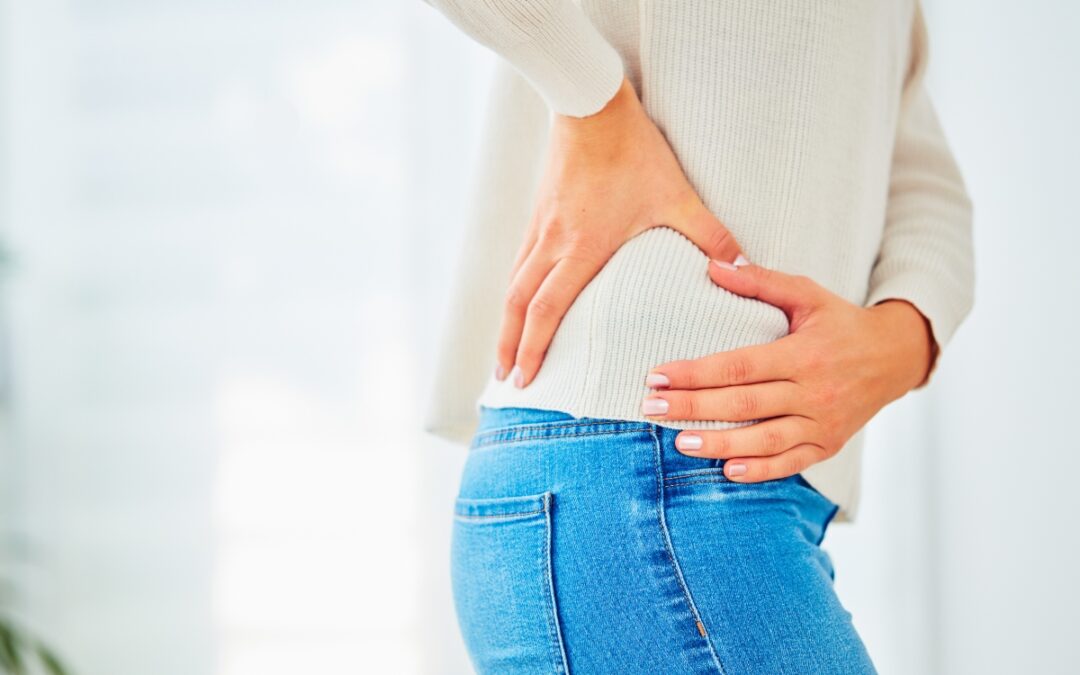When your hip hurts, it’s hard to ignore. It can make walking, sitting, or even sleeping uncomfortable—and over time, it starts to affect your entire routine. Because the hip is such a major weight-bearing joint, even small issues can lead to big discomfort.
The hip joint consists of the femoral head (the ball at the top of your thigh bone) and the acetabulum (the socket in your pelvis). Surrounding this joint are muscles, tendons, ligaments, nerves, and bursae—all of which can become sources of pain when injured or inflamed. So, why is your hip hurting? Here are five common causes of hip pain.
1. Osteoarthritis
Osteoarthritis of the hip occurs when the protective cartilage that cushions the ends of your bones wears down over time. This degenerative condition typically develops gradually with age, although factors like previous injuries can accelerate the process.
People with hip osteoarthritis often describe a deep, achy pain in the groin or front of the thigh that worsens with activity and improves with rest. Morning stiffness that lasts less than an hour is another hallmark sign. As the condition progresses, you might notice a decreased range of motion and a “catching” or “locking” sensation when moving your hip.
The pain from osteoarthritis tends to develop slowly over months or years rather than appearing suddenly. Many people report that weather changes—particularly damp, cold conditions—can intensify their symptoms.
2. Bursitis
Bursae are small, fluid-filled sacs that reduce friction between moving parts in your joints. When these become inflamed, the condition is called bursitis. In the hip, the trochanteric bursa on the outer side of the hip is commonly affected.
Unlike osteoarthritis pain, which often occurs in the groin area, trochanteric bursitis typically causes sharp pain on the outer side of the hip. This pain may radiate down the outside of your thigh and frequently worsens when lying on the affected side, climbing stairs, or after prolonged walking or standing.
Bursitis pain often develops relatively quickly—sometimes over days rather than weeks—especially following repetitive activities that irritate the bursa. The area may feel warm and tender to the touch, distinguishing it from deeper joint issues.
3. Labral Tears
The labrum is a ring of cartilage that follows the outside rim of your hip socket, helping to deepen the socket and secure the ball of the joint. Tears in this structure can cause significant pain and mechanical symptoms.
Hip labral tears frequently cause a locking, catching, or clicking sensation during certain movements. You might experience sharp pain in the groin that comes and goes, particularly with pivoting or twisting motions. Some people describe a feeling of instability in the hip, as if it might “give way” during certain activities.
These tears often result from trauma, repetitive motions, or structural abnormalities in the hip. Athletes who participate in sports requiring frequent pivoting or extreme ranges of motion—like golf, ballet, or hockey—have higher rates of labral tears.
4. Muscle Strains
The hip is surrounded by powerful muscles that can be strained or torn during sudden movements or overexertion. Common sites include the hip flexors (front of the hip), hamstrings (back of the thigh), and adductors (inner thigh).
Muscle strains typically cause sharp pain during the injuring activity, followed by soreness, stiffness, and sometimes swelling or bruising. The pain is usually most severe when contracting or stretching the affected muscle. Unlike joint pain, muscle strain pain often improves significantly with rest and worsens specifically with movements that engage the injured muscle.
5. Tendinitis
Tendons connect muscles to bones and can become inflamed or irritated with overuse or age-related changes. In the hip, the iliotibial band, hamstring tendons, and hip flexor tendons are common sites of tendinitis.
Tendinitis typically causes pain that worsens with specific movements involving the affected tendon. The pain often develops gradually, increasing over weeks as the tendon becomes more irritated. You might notice stiffness after periods of inactivity that improves somewhat with gentle movement but worsens with continued activity.
Unlike arthritis, which affects the joint itself, tendinitis pain is typically more localized to the specific tendon and surrounding area. The condition often responds well to rest and modification of the activities that aggravate it.
When to Seek Professional Care
While occasional minor hip discomfort might resolve with rest and self-care, certain symptoms warrant prompt medical attention, such as:
- Inability to bear weight on the affected leg
- Severe pain that limits your ability to move
- Hip pain accompanied by fever
- Noticeable deformity of the hip
- Significant swelling or redness around the joint
- Hip pain following a fall or significant trauma
- Pain that persists for more than a few weeks despite conservative measures
Proper diagnosis of hip pain often requires a comprehensive examination and possibly imaging studies to determine the exact cause. Different conditions require different treatment approaches, so accurate identification of the underlying problem is essential for effective management.
At Premier Chiropractic Center, your Bessemer chiropractor is ready to help you leave pain in the past. Let’s work together to uncover the root cause and get you back to the activities you know and love! Book your appointment with us today.

Recent Comments